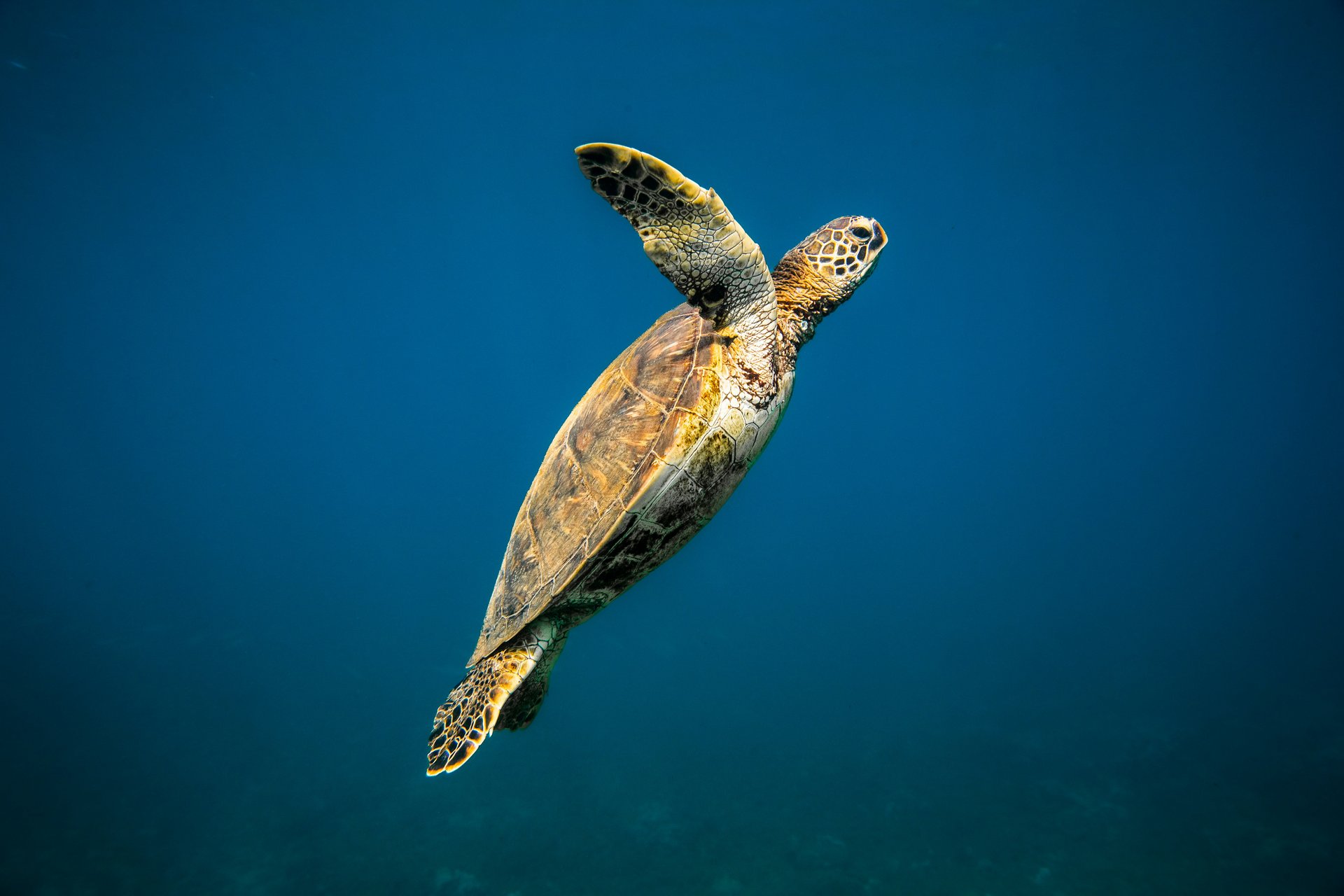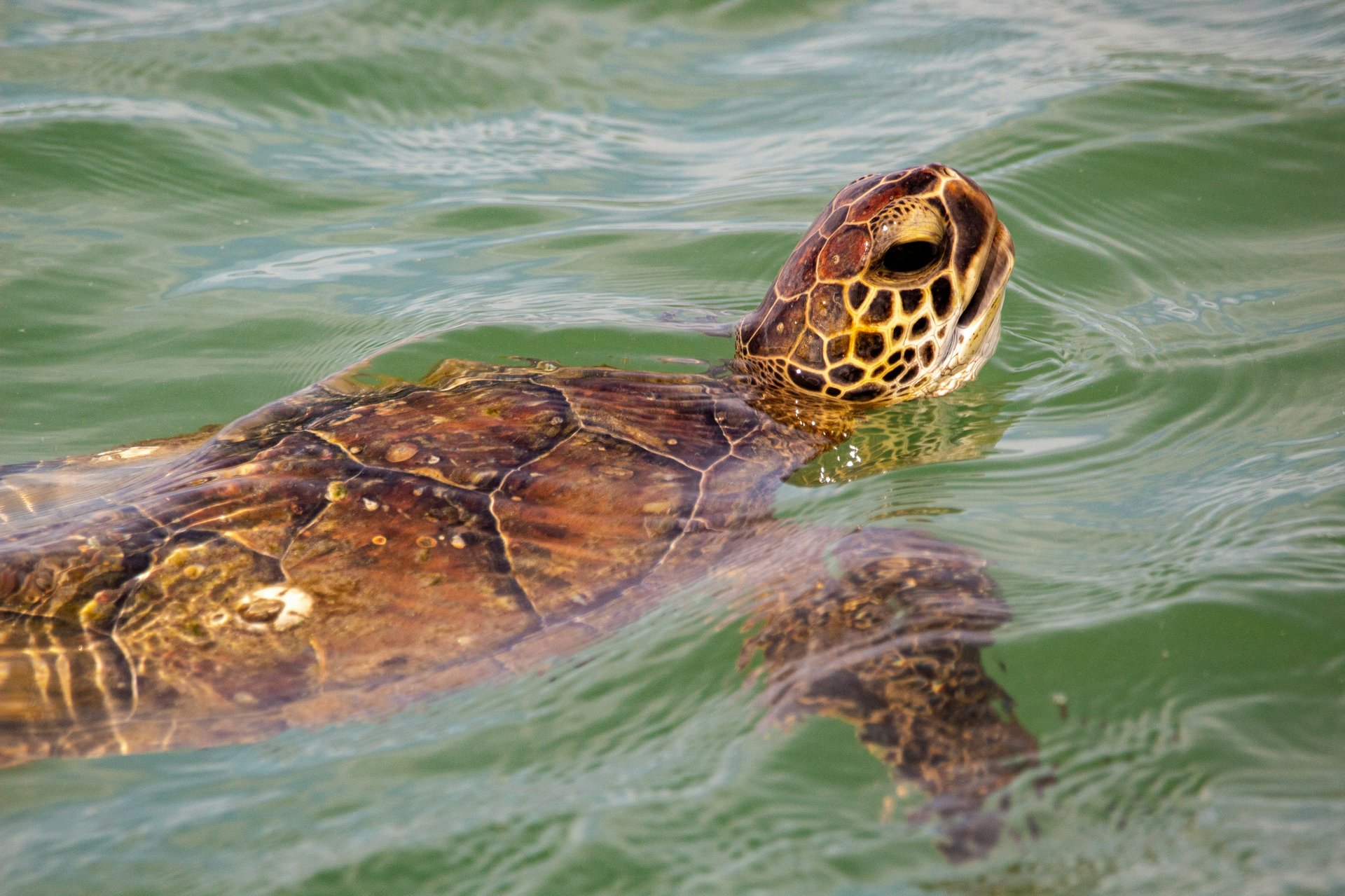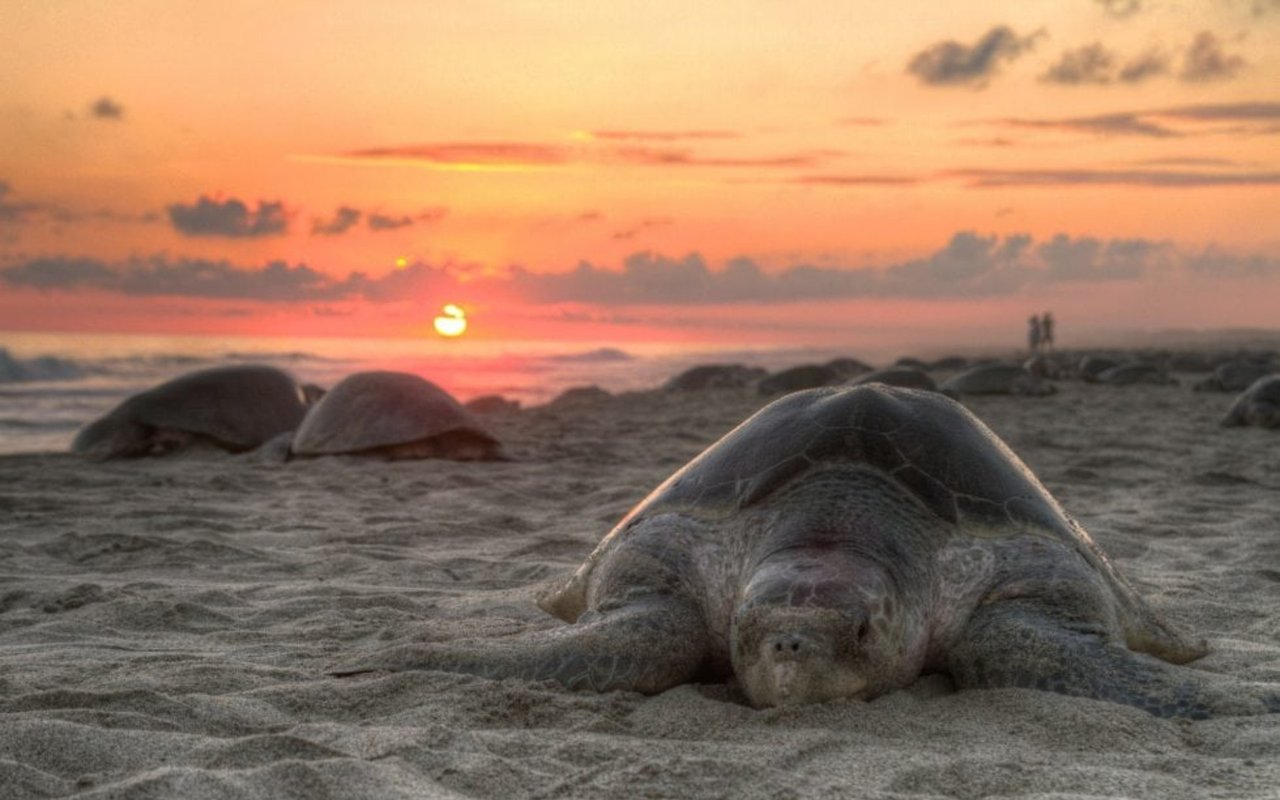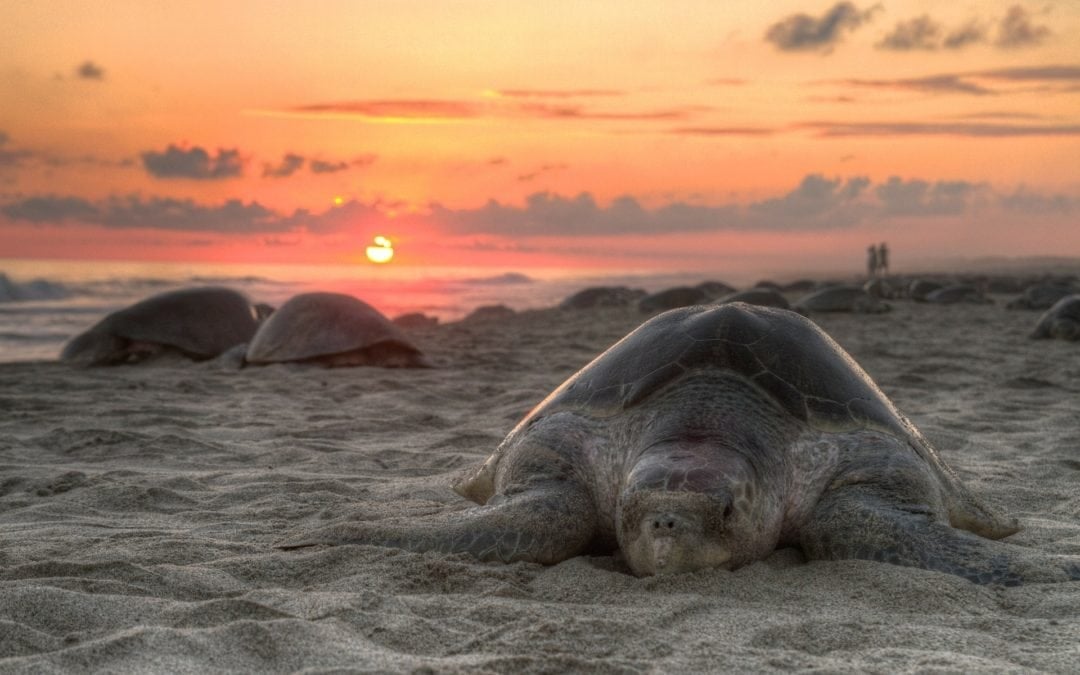It’s officially sea turtle nesting season in Hilton Head! We’ve been embracing the natural beauty of the Lowcountry now more than ever, and we hope this guide will inspire you to head outside and experience this amazing natural phenomenon right here at Hilton Head.
What Species of Turtles Are Native to The Lowcountry?
Loggerhead Sea Turtle
The most common turtle to nest on the beaches here in Hilton Head, the loggerhead sea turtle grows to an average of 3 feet long and 250 pounds. These turtles are known for their reddish-brown shell and log shaped head. Since 1988, the Loggerhead has been the official state reptile of South Carolina, but that doesn’t mean they’ve always been protected. This iconic turtle species has been threatened or endangered since the 1970s. Loggerhead sea turtles are also what’s called a “keystone species,” meaning that the balance of their entire ecosystem is dependent in some way upon their survival.
Green Sea Turtle
Green sea turtles are extremely similar to loggerheads but can be identified by their rounded shell and shorter snout. The more widespread of the four local species, the green sea turtle is known to nest along the shorelines of more than 80 countries. Green sea turtles are also much larger on average, reaching up to 5 feet long and weighing 700 pounds. You may also notice that the turtle itself is not strictly green in color. This species gets its name from the color of its fat, possibly caused by its seaweed-rich diet.
Leatherback Sea Turtle

Kemp’s Ridley Sea Turtle
The rarest and smallest of the four local species, the Kemp’s Ridley sea turtle is also the world’s most critically endangered sea turtle. Kemp’s Ridleys will often travel hundreds of miles to return and nest on the same beach they were hatched from. Because of their critical status and dwindling numbers, protecting these turtles’ nests and hatchlings have become a huge priority in recent years.
Where Are the Common Nesting Areas on Hilton Head?
All four species of turtle nest along sandy beaches, mostly on the southeastern shore of the island. Although there are some small beaches nestled along the shore facing Port Royal, very few turtles nest in this area. You can find an overview of popular nesting areas in Hilton Head here, and the page is also continuously updated with nesting data specific to our area. You can check in daily to watch the numbers of nests rise, or maybe even use the map to catch a glimpse of a nesting turtle yourself! Before you go looking for sea turtles as they journey onshore, it’s important for your safety and for the conservation efforts of these vulnerable reptiles that you follow all established guidelines while searching for and viewing sea turtles.
How Can I Safely View Sea Turtles?

If you see an unmarked nest or crawl marks, do not walk over any portion of it. Sea turtle tracking volunteers use these marks in the sand to monitor and mark new nests each morning.
If you spot a nesting turtle or hatchlings at night, do not use a flashlight or cell phone, as artificial light can disorient the turtles and cause them to lose their way or begin traveling in the wrong direction. In fact, it is possible that a white t-shirt or pair of white tennis shoes can reflect enough light to confuse turtles. Beachfront properties are also required by law to eliminate artificial light after 10 pm, including light that comes from inside the home. Many homeowners have installed automated blinds to help comply with this new law, which has likely led to a dramatic increase in successful nestings on Hilton Head Island.
In light of the recent pandemic, we must also advise you to observe proper social distancing when viewing sea turtles or hatchlings. This amazing natural phenomenon has been known to draw a crowd of onlookers on public beaches. Be sure to keep at least six feet of distance from onlookers outside your immediate family or group.
If you see a confused, injured, or dead turtle or hatchling or observe anyone attempting to disturb a turtle or nest, call the South Carolina Department of Natural Resources’ 24/7 hotline at (800)-922-5431.
What Else Can I Do to Help Sea Turtle Conservation Locally?
An indirect way that you can assist nesting sea turtles is by reducing litter on Hilton Head Island. Sea turtles often confuse trash bags, balloons, or similar items for their favorite foods—jellyfish, crabs, or seaweed. As you can imagine, garbage can be hazardous or even deadly to these reptiles. Help conservation efforts by picking up and properly disposing of any trash that you see.
Another way to assist sea turtles and prevent strandings is to fill in holes and collapse sand structures on the shoreline. These holes and structures can be deadly to nesting sea turtles or hatchlings as they make their way to and from the water.
Hilton Head’s oceanic wildlife is one of the many things that naturally draws people to its sandy shores. If you’re looking to embrace the Lowcountry’s rich culture, coastal views, and diverse wildlife, we hope you’ll consider calling Hilton Head “home.” Give us a call at (843) 757-7712 or send us an email at [email protected] and we’ll be happy to help you find your perfect corner of our Lowcountry paradise.



